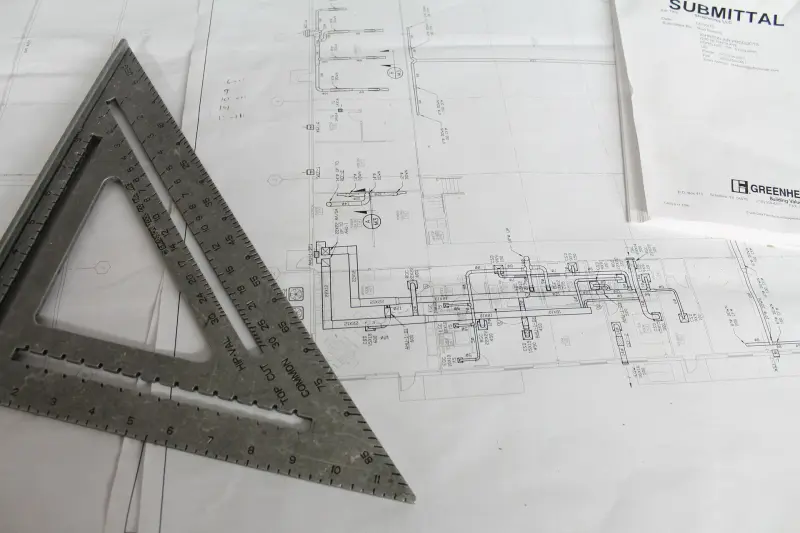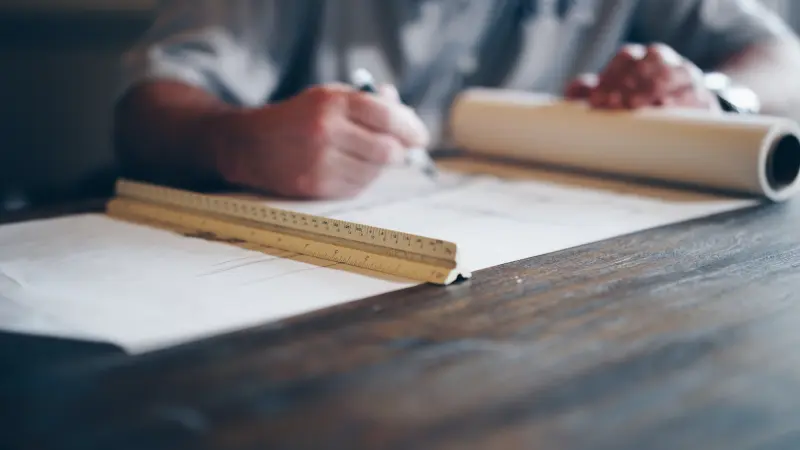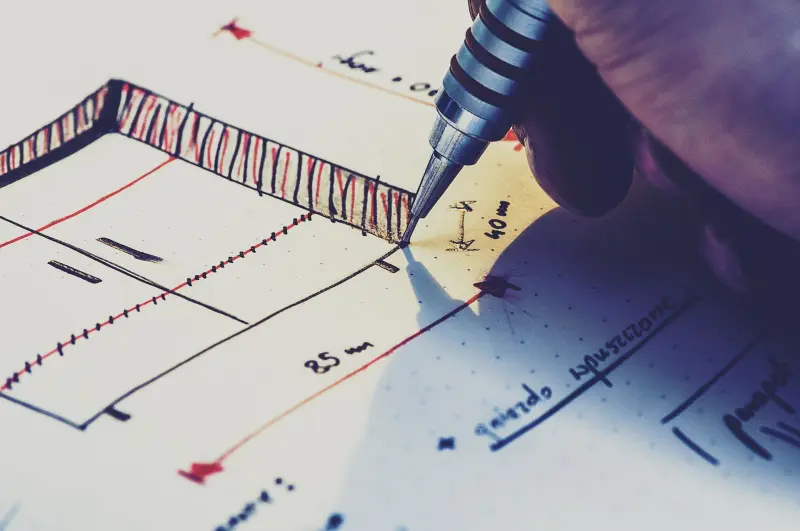What drawings are needed for an extension? This article looks at what are architectural drawings and what types of designs and plans do you need?
Before your next house extension can go ahead, you require architectural services and permission from your local authority to build. If you are new to construction project management, keep reading this article before your next extension project as we explain what drawings you need.
What Are Architectural Drawings?
Architectural drawings are a crucial part of the formal planning route associated with the design process. As extensions require planning permission, and you cannot acquire this with extension drawings, it's worth working with architectural designers.
House extension drawings (when completed by a professional and registered architect) provide a blueprint of the project, ensuring everyone is on the same page. The measurements, calculations and different types of materials used are included in these drawings so builders, contractors, electricians, plumbers and everyone in between can understand.
Once these drawings are created, access points, doors and walls can be measured and viewed, allowing interior designers to plan the layout and start designing furniture and lighting. To acquire permission, these drawings will be sent to your local council. They will receive countless proposals each year, so you must make yours stand out and include all the relevant plans and designs.
What Types Of Designs And Plans Do You Need?
Before moving on to the fun interior design planning and even the building aspect of your home extension, you have multiple requirements and specifications to meet.
Existing drawings
The first step of your extension plans comes from acquiring the existing drawings of your property.
The full plans of the original dwelling (before construction begins) will show you how the space and rooms flow together, informing the new extensions as they develop.
Your extension must be built from the same or similar material as the original building, and you cannot receive building regulations approval without complying with this. Hence, it's worth considering the existing plans.

Design floor plans
You will also require design floor plans, showing the essential features and functions of each room and the building as a whole. These plans are required for any modification, usage or construction of the building.
This scale diagram of the structure will be used by many people, from the building control surveyor to structural engineers where required.
Elevations
To continue the planning process, you will need elevations. These two-dimensional drawings are made of the exterior and interior of the building's face, showing North, East, South and West angles of the directional views.
Any rear or side house extensions will benefit from this information, and some structural calculations may be required to adjust to the new build.
Structural drawings
House extension designs require information about any load-carrying members of the property, along with their location. The building materials used on the property will typically be noted on these documents, and architectural technologists can ensure this information is forwarded to the right people.
Electrical drawings
While you may believe your building work doesn't require electrical drawings, having technical drawings representing the electrical system and circuits will aid electricians during your rear extensions or single-storey extensions. Extending houses into habitable spaces will require knowledge of the electrical access points.

Plumbing and sanitary drawings
Much like the electrical drawings, plumbing drawings show the pipework coming in and out of the property.
Freshwater should be piped into the building, and a waste pipe should discharge solid and liquid waste away.
Water supply systems, irrigation systems and drainage systems should be noted, especially when evaluating extension costs for additional plumbing.
You must adhere to Building Regulations for all projects, which involves sending off a full plan submission or building notice.
An approved inspector will regularly visit your property to ensure you're complying. You will require additional plans and forms when you're building in designated areas of outstanding natural beauty, national parks or conservation areas.
Why Do I Need Plans And Designs?
Working with architectural technicians and securing technical drawings of your building and the proposed extension is not to be looked over, as they are essential to a successful project. Unexpected costs can quickly arise when building a new space, which is why you should take on professional advice.
Approval must be provided by your current contents and house insurance service provider, so you mustn't forget to tell them in advance of the proposed work. In situations where you require planning permission for your extension, you cannot get permission from your local authority without these professional drawings.
You will require planning permission for most builds, from a detached property over eight metres to the rear to a single-storey extension extending higher than four metres. Side extensions, for example, can only be single-storey and cannot be higher than four metres, with a width of half of the original building.
If your extension is no more than half the width of the overall property (and other scenarios), you can get by on Permitted Development. In such instances, you should secure a lawful development certificate to prove you have permission to finish the build. Carrying a building notice while on-site shows you did not have to submit drawings for your extension and should be recognised by building inspectors during site visits.
Should I Employ An Architect When Building An Extension?
Regardless of the type of extension, you can either hire an architect or enlist the services of a build and design company. Depending on your chosen avenue, your budget may stretch further, and the process could become more straightforward. Many homeowners decide to use a design and build company to keep all hired builders and designers as part of the same team, while others choose an architect. Either way, you are receiving invaluable advice.

Planning drawings with an architect becomes more straightforward once you begin the process, discussing with them want you're looking for in your home extension. To begin the design process, start by voicing ideas you may have, and your architect will take this forward into several drawing examples. They will also ensure your extension remains legal, such as not going over the building line of the original structure.
As a general rule, architects' services and plans cost anywhere from 5%-15% of the overall construction cost, with the higher fees typically involving them as a project manager too. Of course, the complexity and size of your extension will also affect the overall price, and different extension types vary. Loft conversions will be priced differently compared to rear boundary side extensions.
While "window shopping" for architects, you should find one that matches your lifestyle and has experience with extensions of your preference. If you want your architect to take on the responsibility of project manager, they can typically liaise with party wall surveyors, structural engineers, designers and building control officers, coordinating various consultants and teams. This is especially helpful when extending the ground floor and liaising with the different flooring trades.
Consider discussing with local estate agents before beginning the building work, too, as they can inform you of the local market and extension prices. There is a good chance you can add value to your property by extending.
For more help on filing planning applications and being approved by building control, don't hesitate to contact our team. We are experienced architects and designers and can provide you with the support you need.
Are you looking for an commercial architects in Sussex, Kent, Surrey and London? For architect services in West Sussex and the surrounding areas, follow the links below.

